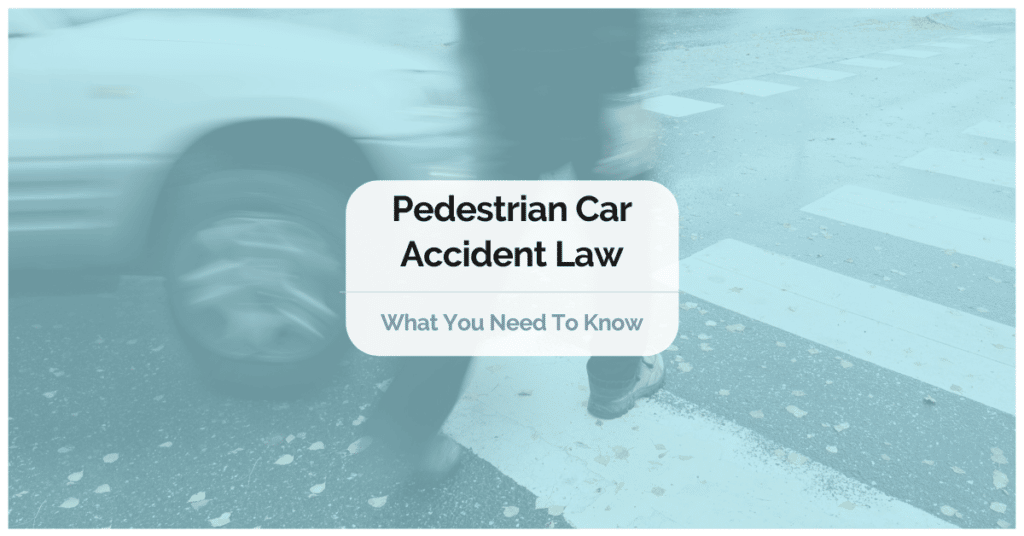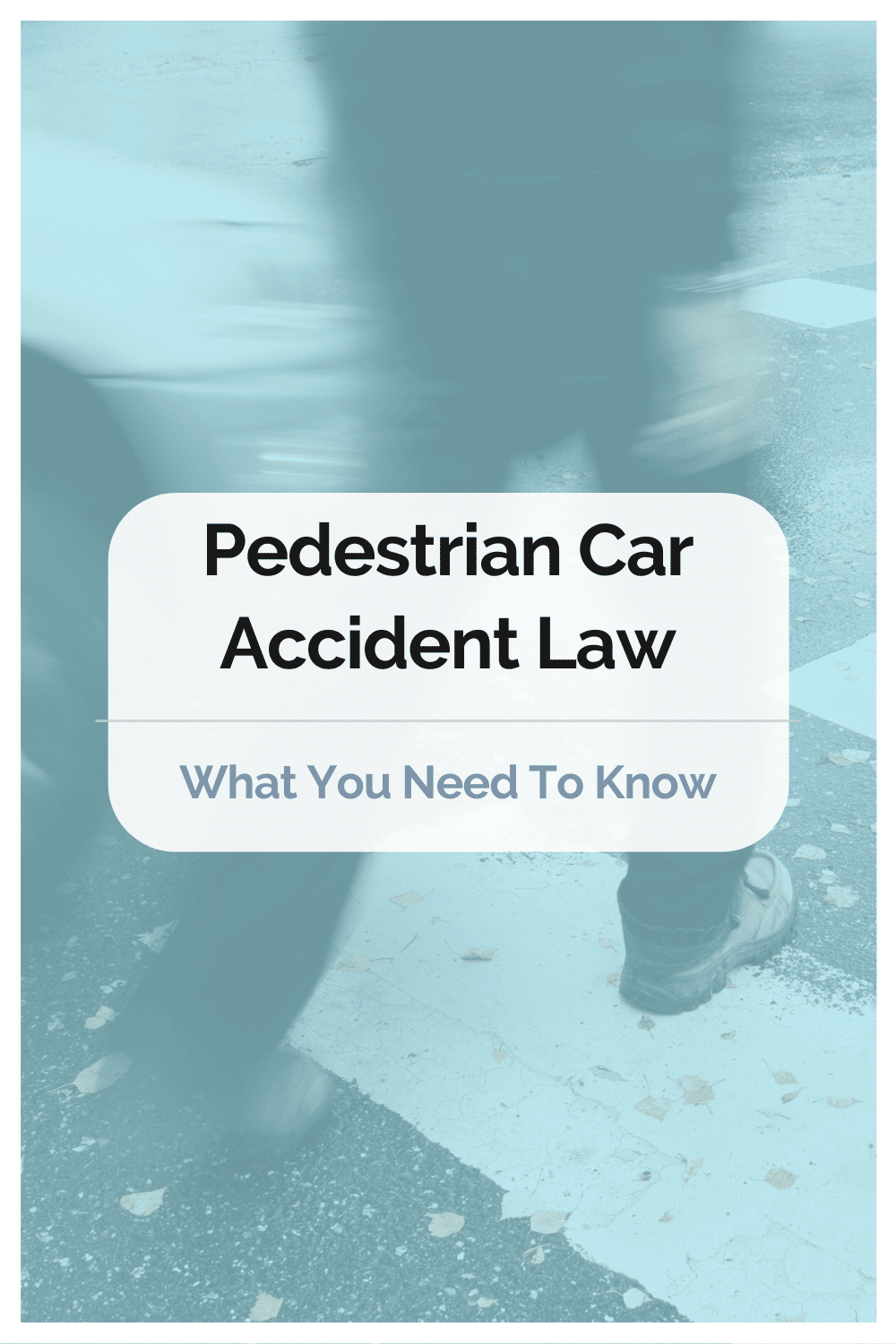Michigan Pedestrian Accident Law: Everything You Need To Know

According to Michigan law, if you are a pedestrian injured in a car accident you may be able to recover pain and suffering compensation from the at-fault driver and No-Fault benefits from your auto insurance company. Knowing these laws are important as pedestrian fatalities and injuries continue to increase.
No-Fault benefits can be a financial lifeline for injured pedestrians, paying for their crash-related medical bills and reimbursing them for lost income if their injuries disable them from working.
Is the risk of a pedestrian accident increasing in Michigan?
Pedestrian-involved motor vehicle crashes involving both fatalities and injuries are on the rise in Michigan, according to Michigan Traffic Crash Facts. In 2019, there were 2,403 pedestrians involved in motor vehicle crashes throughout the state, as opposed to 2,317 in 2018. Pedestrians killed and injured also increased from 145 to 149 and 1,820 to 1,910, respectively, from 2018 to 2019.
Nationwide, the number of pedestrians killed in motor vehicle crashes dropped 169 from 6,374 in 018 to 6,205 in 2019, but the number of injured pedestrians increased from 75,000 in 2018 to 76,000 in 2019, according to NHTSA.
About pain and suffering compensation
According to Michigan law, if you are a pedestrian injured in a car accident, you may be able to recover compensation for pain and suffering damages, excess medical expenses and excess lost wages from the at-fault driver – and from the vehicle owner under the “owner liability” law if the driver and owner are not the same person. (See MCL 257.401(1))
To recover compensation for your pain and suffering, you will need to be able to prove that you suffered a “serious impairment of body function.” This is known as the tort threshold injury requirement, which the No-Fault auto insurance law requires all injured pedestrians to comply with before they can successfully recover “noneconomic loss” damages.
Does it matter who was at-fault for a pedestrian accident in Michigan?
According to Michigan law, it matters who is at-fault for a pedestrian injured in a car accident because if they are seeking pain and suffering compensation and other economic damages they must prove the driver from whom they are trying to recover compensation from was at-fault in causing the crash. However, fault does not matter when an injured pedestrian seeks No-Fault benefits.
When is a pedestrian at fault for an car accident in Michigan?
Rarely is a pedestrian at fault for a car accident in Michigan. But that does not stop auto insurance companies and their defense lawyers from blaming the pedestrians for injuries caused by an at-fault negligent motorist based on Michigan’s “comparative fault” law.
The comparative fault rule says:
- “Damages must be assessed on the basis of comparative fault, except that damages must not be assessed in favor of a party who is more than 50% at fault.” (MCL 500.3135(2)(b))
Some Michigan courts have, in my opinion, improperly used the “more than 50% at fault”/comparative fault rule to unfairly blame pedestrians who are hit by motor vehicles as a way to let negligent motorists (really their insurance companies) escape being held responsible and being forced to pay for the injuries and harms they have caused.
Nevertheless, if a judge or a jury determines that a pedestrian is more than 50% at-fault in causing or contributing to a car accident in Michigan, then he or she will be precluded from suing the driver of the automobile or truck that hit them for pain and suffering compensation.
How much compensation can you recover if injured?
The amount of compensation you will be able to recover after a pedestrian accident in Michigan for your pain and suffering and excess medical expenses and lost wages will be greatly affected by how much liability insurance coverage the at-fault driver (and owner of his or her vehicle) has available.
All Michigan drivers are legally required to carry a minimum of $250,000/$500,000 in liability insurance coverage, although they have the option “to purchase lower limits” of $50,000 and $100,000. (MCL 500.3101(1); 500.3131(2); 500.3009(1)(a) and (b), (5))
However, the liability insurance coverage limits applicable to your crash may be higher if the at-fault driver was driving for Uber or Lyft, driving a truck or commercial vehicle, or if he or she was an employee of a business and acting within the scope of his or her employment at the time of the crash.
Michigan No-Fault benefits after a pedestrian accident
According to Michigan law, if you are a pedestrian injured in a car accident your insurance company will pay for your crash-related medical expenses, lost wages (if your injuries have disabled you from working), mileage and transportation costs for going to and from medical appointments, household replacement services and attendant care services.
Whether you were in any way at-fault in causing or contributing to the crash that resulted in your injuries is irrelevant to your ability and legal right to claim No-Fault benefits because they are guaranteed under the law “without regard to fault.” (MCL 500.3105(2))
Who pays your Michigan No-Fault benefits?
According to Michigan law, if you are a pedestrian injured in a car accdent the auto insurance company that will be responsible for paying your Michigan No-Fault benefits is determined as followed by the No-Fault law’s “priority” rules:
- Your own No-Fault auto insurance policy for your own personal motor vehicle in which you are the named insured. (MCL 500.3114(1); 500.3115)
- The No-Fault auto insurance policy that your spouse has on his or her motor vehicle. (MCL 500.3114(1); 500.3115)
- The No-Fault auto insurance policy that a resident relative who lives with you has on his or her motor vehicle. (MCL 500.3114(1); 500.3115)
- The Michigan Assigned Claims Plan will assign an auto insurance company to pay for your No-Fault benefits if there is no No-Fault coverage available to you through any of the other sources. (MCL 500.3115)
How much No-Fault medical coverage do you have to help pay your medical bills
According to Michigan law, if you are a pedestrian injured in a car accident, The amount of No-Fault medical benefits coverage you will have available to pay your medical bills will be limited to whatever No-Fault PIP medical benefits coverage level was selected in your policy or the policies of your spouse and/or resident relative. (MCL 500.3107c(5))
The medical coverage level that applies to your claim will be one of the following: (1) $50,000 (for drivers on Medicaid); (2) $250,000; (3) $500,000; or (4) “no limit” (i.e., unlimited). (MCL 500.3107c(1))
However, if you are claiming No-Fault benefits through an auto insurance company that was assigned to your claim through the Michigan Assigned Claims Plan, then your No-Fault medical coverage will be limited to $250,000. (MCL 500.3172(7)(a))
Excess medical expenses and lost wages after a pedestrian accident in Michigan
You may be able to recover excess medical bills and lost wages after as part of your claim for pain and suffering compensation. Excess medical expenses and lost wages are some of the economic damages you can recover from the at-fault driver who caused your crash. (MCL 500.3135(3)(c))
These damages may cover the portion of your medical expenses that is not covered by the No-Fault PIP medical benefits coverage level in the auto insurance policy through which you are claiming benefits.
They may also reimburse you for lost income that is not covered under the No-Fault law.
Need legal help? Call the attorneys at Michigan Auto Law now!
If you or a loved one was a pedestrian injured in a car accident in Michigan, call now (855) 781-7747 for a free consultation with one of our experienced lawyers. There is no cost or obligation. You can also visit our contact page or use the chat feature on our website.
Michigan Auto Law is Michigan’s largest and most successful law firm that specializes exclusively in helping people who have been injured in auto accidents.
Our secret? Our Michigan pedestrian accident lawyers deliberately handle fewer cases than other personal injury law firms. This allows us to focus more time and attention on our cases.
Unlike other law firms, our attorneys are never too busy to promptly return phone calls and answer questions.
We have more than 2,000 5-Star Reviews that reflect this care and attention to detail.
More importantly, this client-focused approach leads to better and faster settlements for our clients. Michigan Auto Law has recovered more million-dollar settlements and trial verdicts for motor vehicle accidents than any other lawyer or law firm in Michigan. We’ve also recovered the highest ever reported truck accident and car accident settlement in the state.
Call now so we can start making a real difference for you.
(Sources: Michigan Traffic Crash Facts, Fact Sheets, Pedestrians, 2018-2019; NHTSA, Traffic Safety Facts – Research Note, “Overview of Motor Vehicle Crashes in 2019,” published December 2020)






